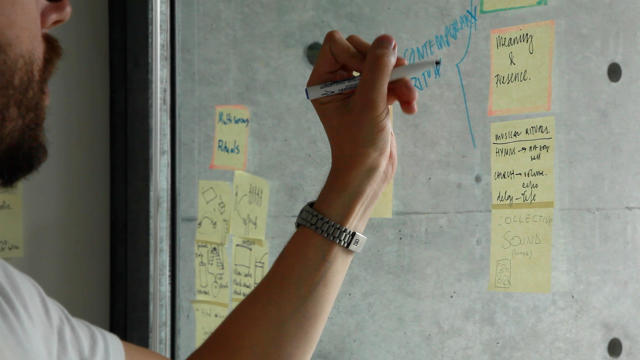Joy. Shock. Grief. They can be tough feelings for an adolescent to articulate, so this app lets them speak in music.
Editor: Suzanne LaBarre
It’s difficult for any of us to articulate the nuanced pangs of the human emotional spectrum, which is why we rely on other media—art, photography, and music—to explore those feelings when words fail. But could we streamline that artistic release? Could we just use an app to reach catharsis? Flutter may offer that opportunity. At first glance, it’s just a music generator. You touch anywhere on the screen to build and manipulate a track, changing its key. But it’s designed with an intent to be more than another music app. Flutter has been built from its core to be an easily manipulated soundtrack to your emotional state. Simply by dragging your thumb, the app can echo anything from anger to comfort. The project is the brainchild of Alex Rothera—who you may recognize from work on landmark Disney Research projects—and Ivor Williams, who leads the new Being and Dying research group at Somerset House.

“It is the thought that when listening to music or watching a movie scored well, you intuitively have a sense of where the scene is going or what the feeling of the moment is,” Rothera tells Co.Design. “But now in Flutter it is the opposite. We’re designing with the belief that in tough moments you have an idea about how you feel, but can’t pin it down or describe it in the right way. So by finding that intuitive sound or music, you have room for expressing yourself. Rothera describes the app as “reverse engineering” much of the 2011 publication Music and Emotions, an academic paper which outlines, by genre, how music can affect our mood right down to its manipulative chord progressions. A musician and classical composer were brought in to score Flutter and assist in developing the various permutations of its core track—a track that always begins as one note and is invented dynamically in response to a user’s tapping of the screen. As the user interacts with different parts of the screen, the melody grows more complex and the chord structures shift between major and minor. The sonic results, while admittedly as difficult to describe as the emotions they’re constructed to mimic, make a lot of sense when you actually hear them played: Surely there’s a universal human appeal at the heart of Flutter, since we all have feelings to express. But the team has positioned it more in response for the needs of adolescents who are dealing with grief for the first time and haven’t developed the skills to do so. It is meant to be a private escape for young people in the hyperconnected age. “The ways in which we grieve has changed immeasurably thanks to social media and ubiquitous personal technologies; we’re in closer contact, almost all the time, with people important to us,” Williams writes. “At the same time though, young people—who are using that connective-technology the most—are the most vulnerable when it comes to dealing with death. The complex mix of emotions are difficult to navigate, and you often suffer in silence, unable to express the way you feel. We wanted to understand if there was a more meaningful way for adolescents to express themselves, and if so, how they could integrate this into their daily lives.” Flutter is currently a working prototype, but the team intends to proceed more like a cautious research institution than a boisterous startup, and will be conducting professional user testing under the supervision of psychologists and counsellors first before taking the project public. Read more here.
(241)